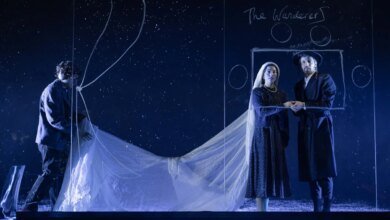Visit from an Unknown Woman ★★★★ — Jewish Renaissance


Now, playwright Christopher Hampton has written a stage drama based on the story, adding to the tension by moving most of the action to the 1930s, though it shifts backwards and forwards in time. He also gives the male protagonist (‘R’ in the novella) the name Stefan, making the play more directly autobiographical. It opens in 1934, when it was becoming clearer to an uneasy Europe that a second all-consuming war was all too likely. In reality, Zweig felt threatened by antisemitism and the rise of the Nazis, a fear that eventually forced him to flee Austria and go into exile, first to England and then Brazil. In February 1942, despairing at the destruction in Europe. he killed himself, together with his second wife, Lotte.
Hampton’s play begins with an inspired plot twist and an insight into Stefan’s lifestyle. The visit is by invitation. The audience gradually becomes aware that he has history with the confident young woman, who has left her partner at a top Vienna jazz club, where she meets Stefan, to slip away with him. She is his former neighbour, Marianne. As a young girl, she had lived in that very apartment block. She has adored him for years, but she had moved away and he simply hasn’t recognised her. He brings her back to his bachelor apartment, where they fall into each other’s arms and share a nightcap – before sharing his bed. Although she is aware that he has not recognised her, she does not share her identity with him: that she is the young girl who had a crush on him and who watched the comings and goings of the many women in his life.




